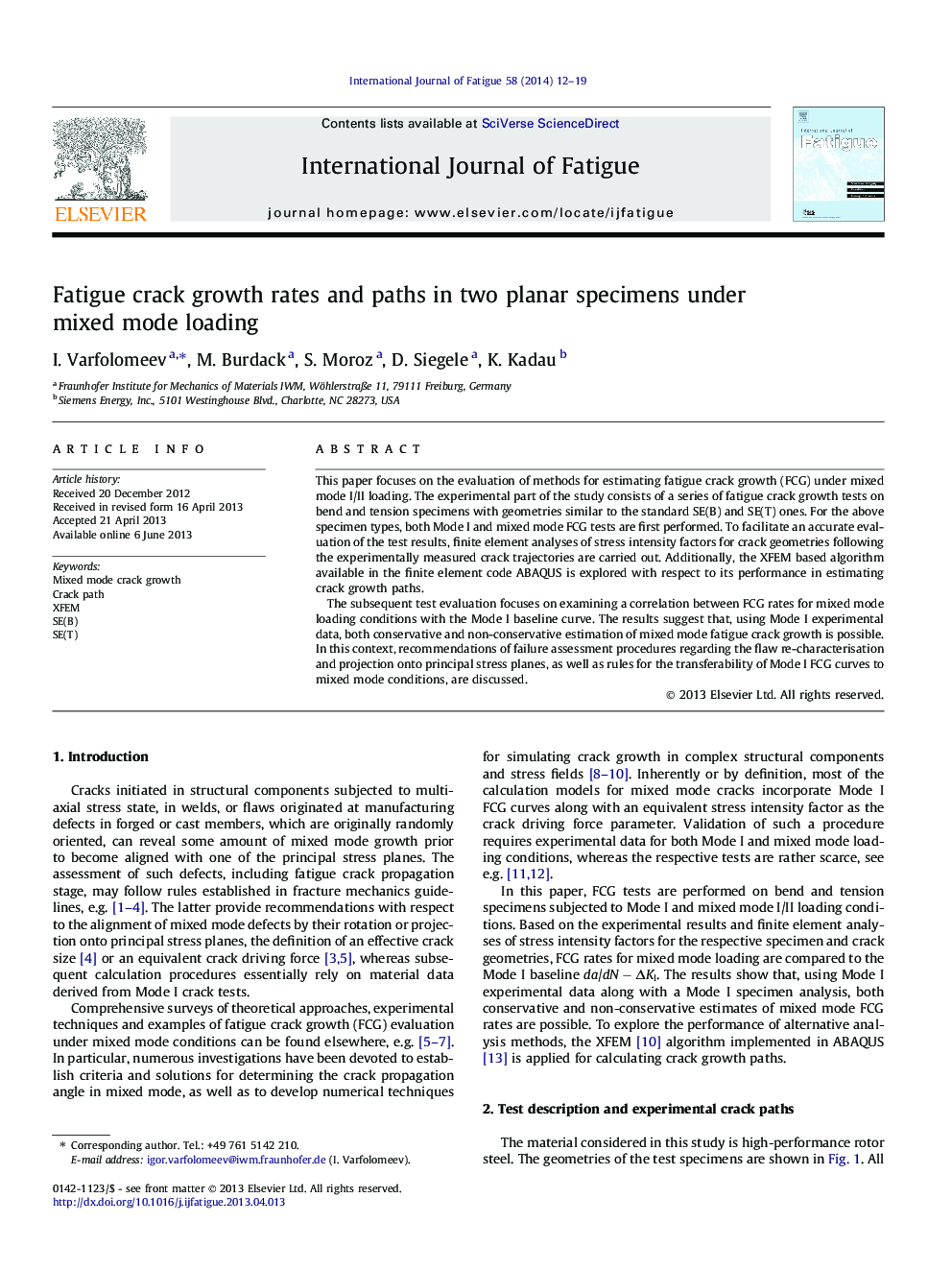| Article ID | Journal | Published Year | Pages | File Type |
|---|---|---|---|---|
| 780771 | International Journal of Fatigue | 2014 | 8 Pages |
•Fatigue crack growth (FCG) tests are performed for SE(B) and SE(T) specimens.•Mode I and mixed mode I/II loading conditions are studied.•Experimental crack growth paths are compared to those predicted using XFEM.•Considerable discrepancy in Mode I and mixed mode FCG rates is observed.
This paper focuses on the evaluation of methods for estimating fatigue crack growth (FCG) under mixed mode I/II loading. The experimental part of the study consists of a series of fatigue crack growth tests on bend and tension specimens with geometries similar to the standard SE(B) and SE(T) ones. For the above specimen types, both Mode I and mixed mode FCG tests are first performed. To facilitate an accurate evaluation of the test results, finite element analyses of stress intensity factors for crack geometries following the experimentally measured crack trajectories are carried out. Additionally, the XFEM based algorithm available in the finite element code ABAQUS is explored with respect to its performance in estimating crack growth paths.The subsequent test evaluation focuses on examining a correlation between FCG rates for mixed mode loading conditions with the Mode I baseline curve. The results suggest that, using Mode I experimental data, both conservative and non-conservative estimation of mixed mode fatigue crack growth is possible. In this context, recommendations of failure assessment procedures regarding the flaw re-characterisation and projection onto principal stress planes, as well as rules for the transferability of Mode I FCG curves to mixed mode conditions, are discussed.
